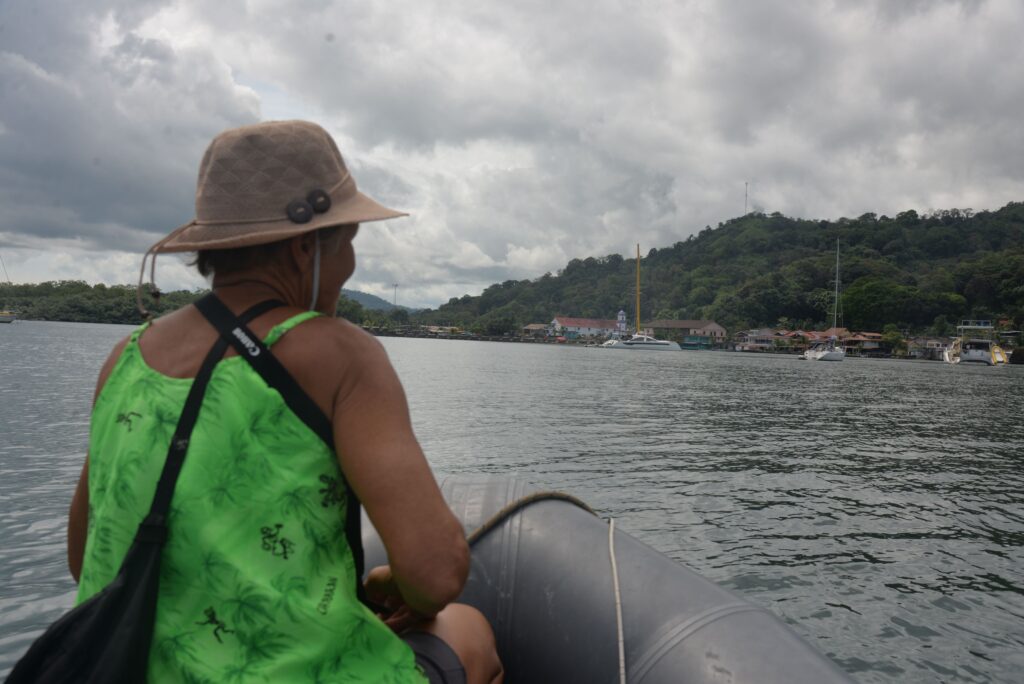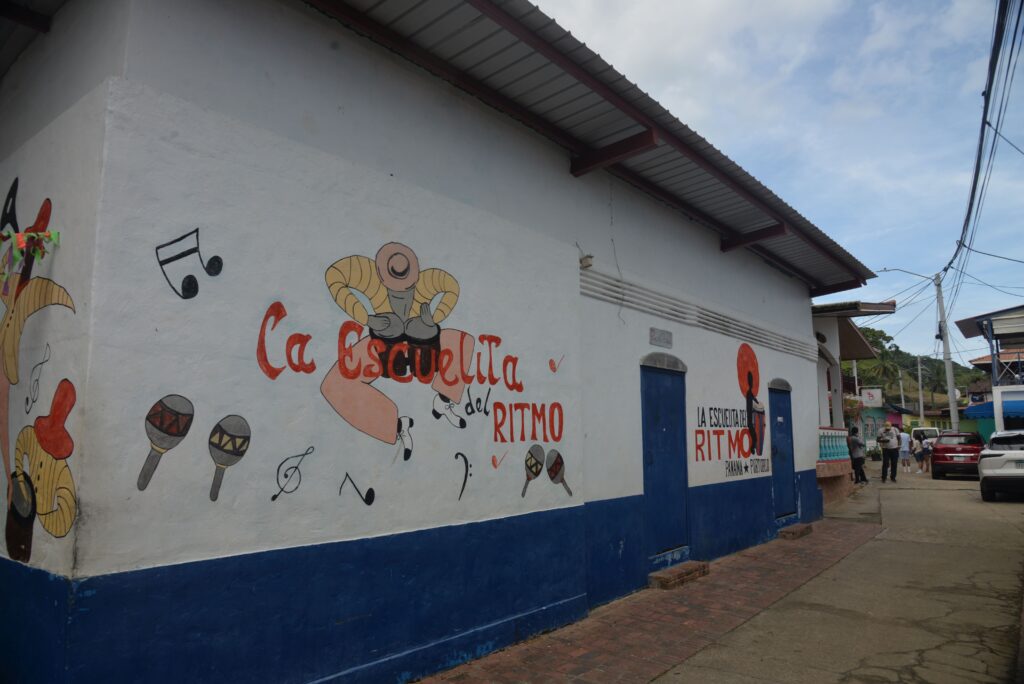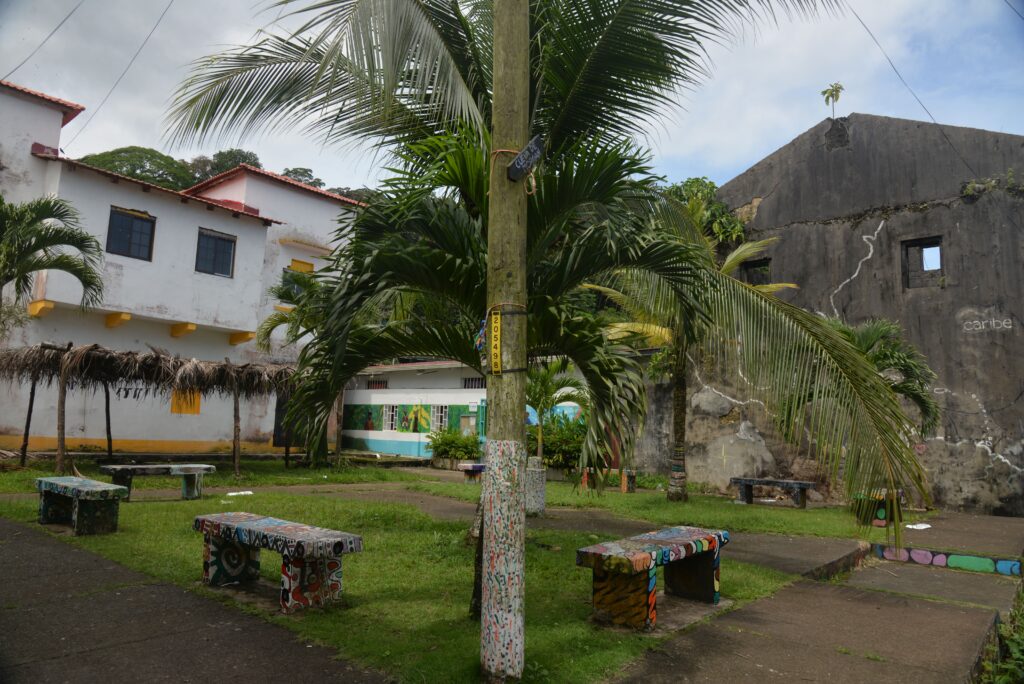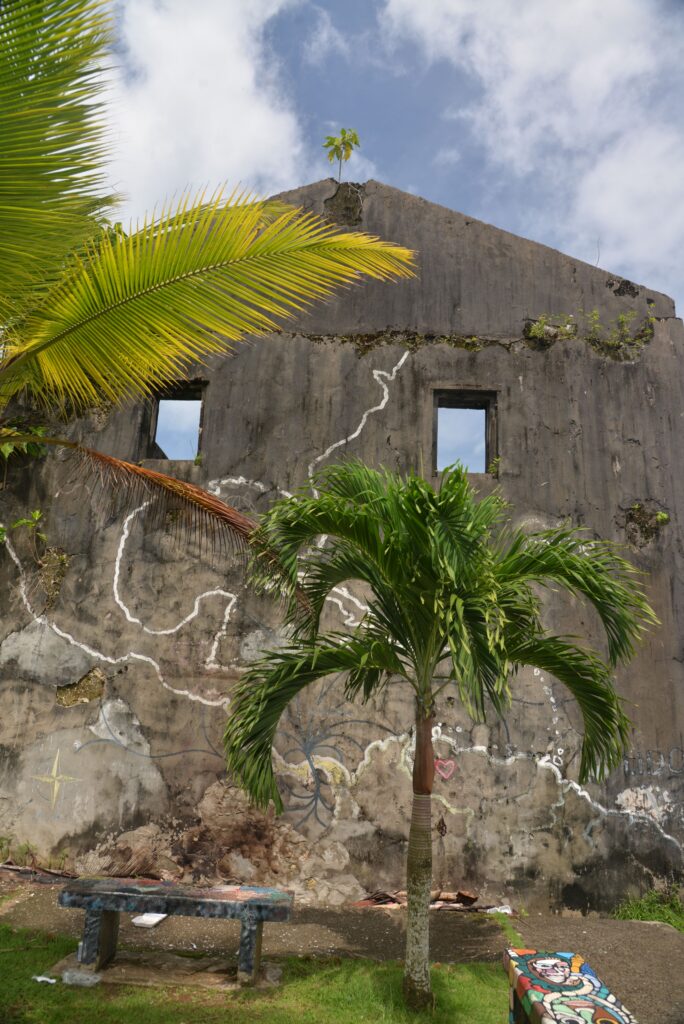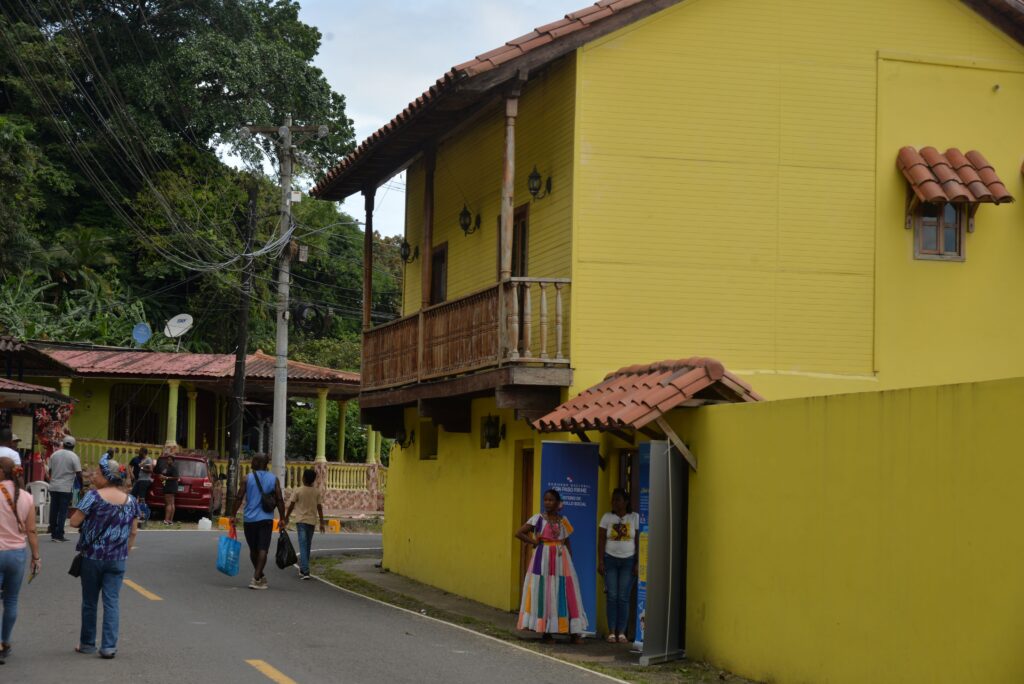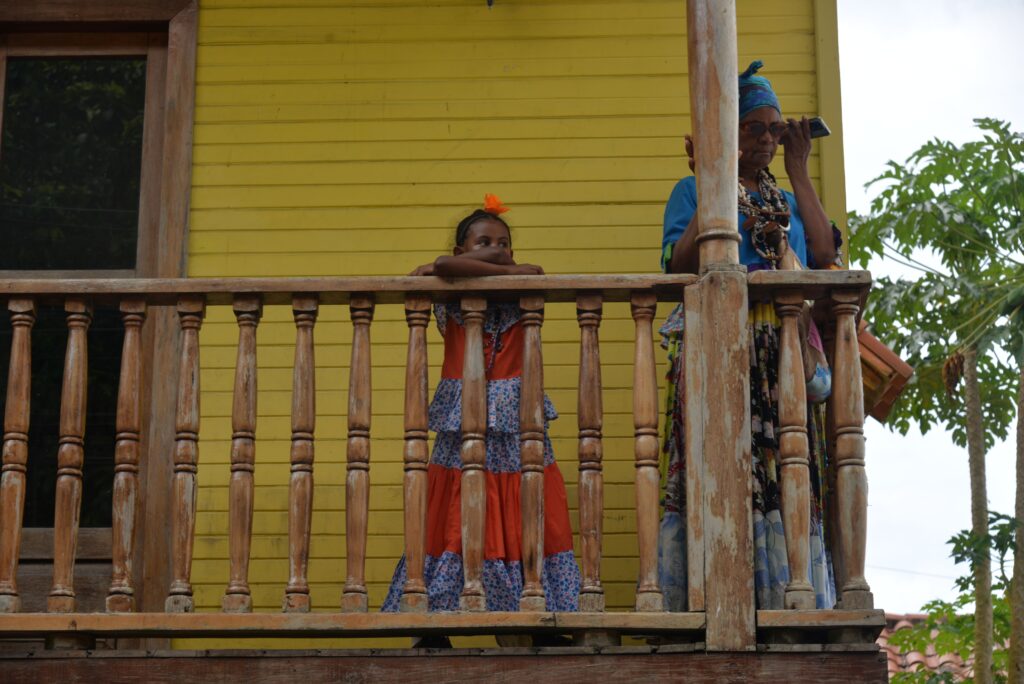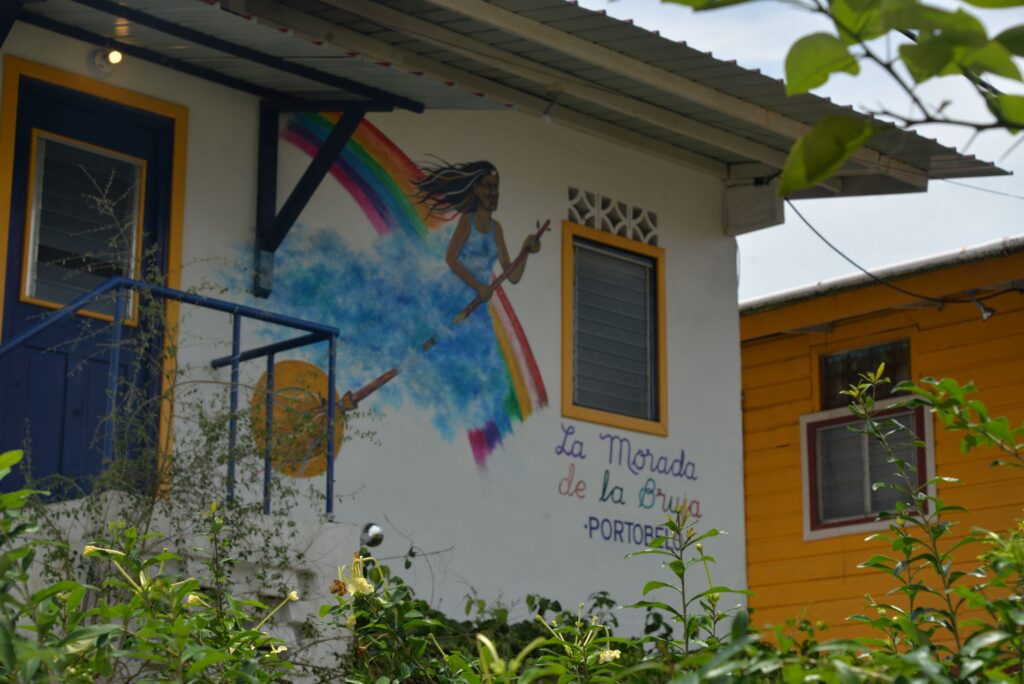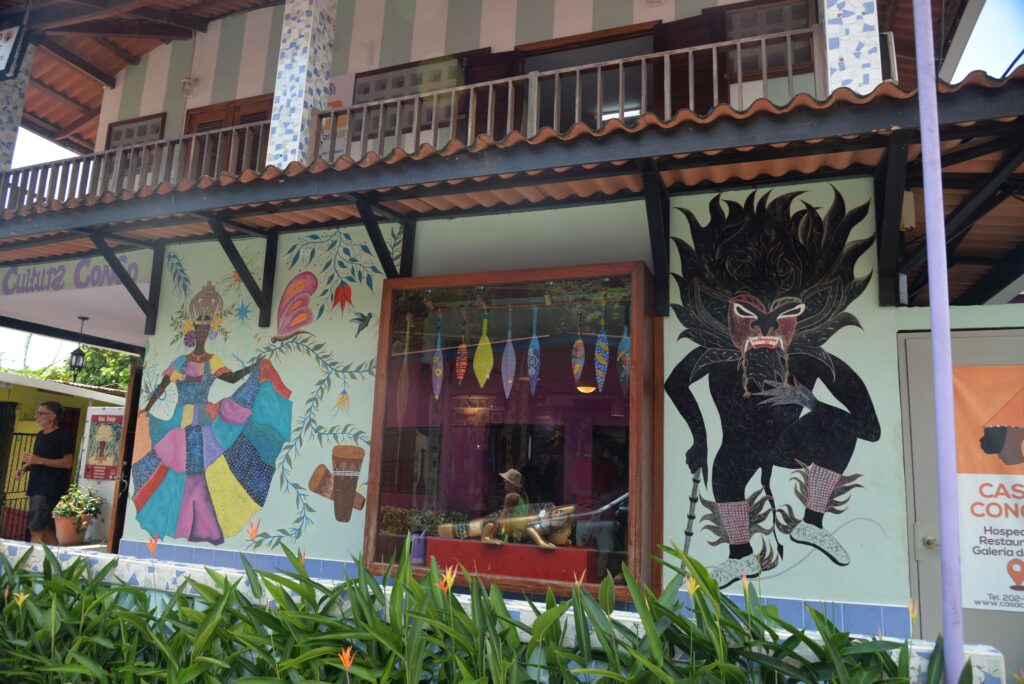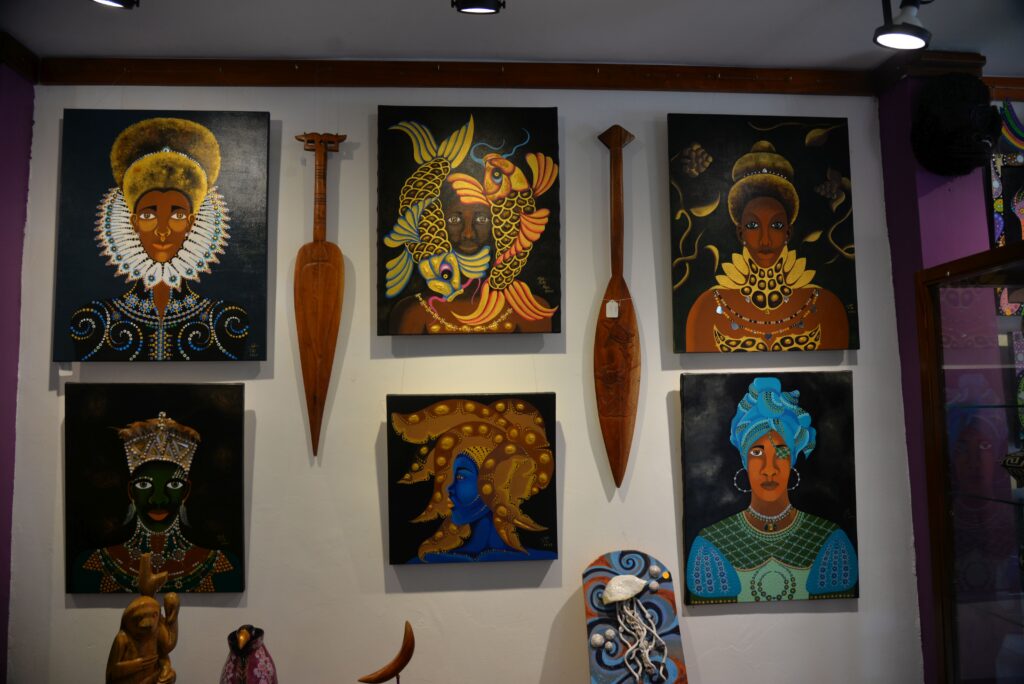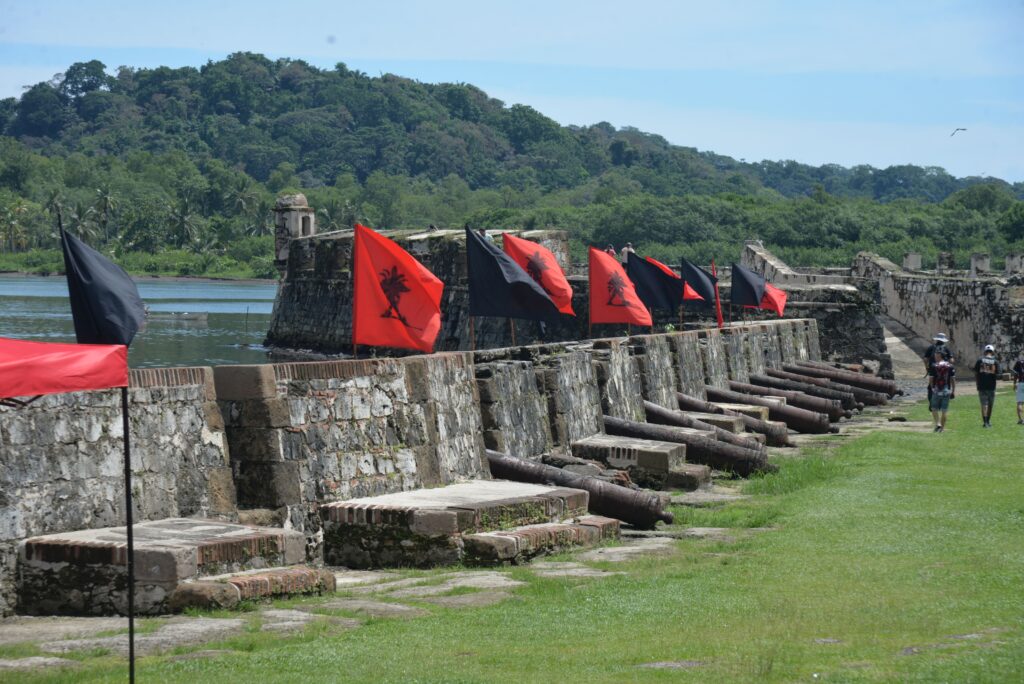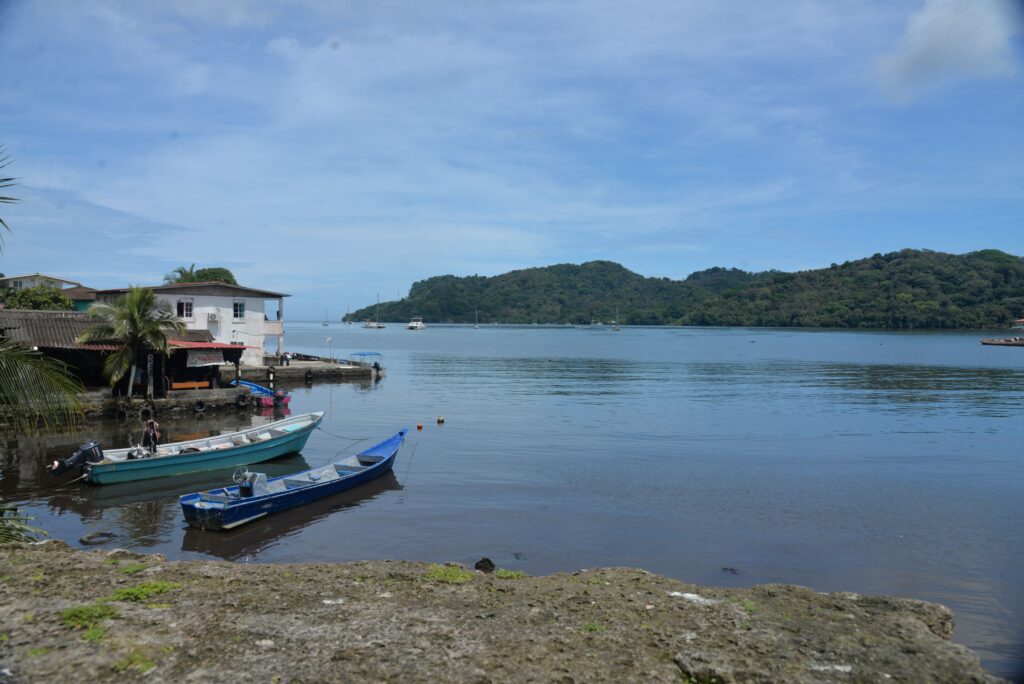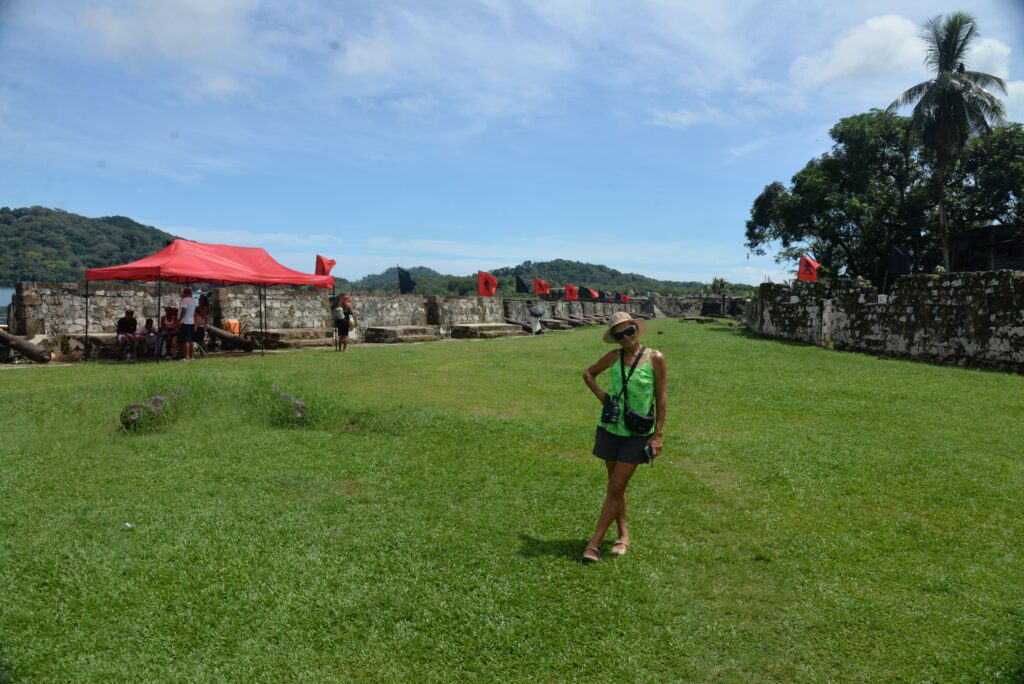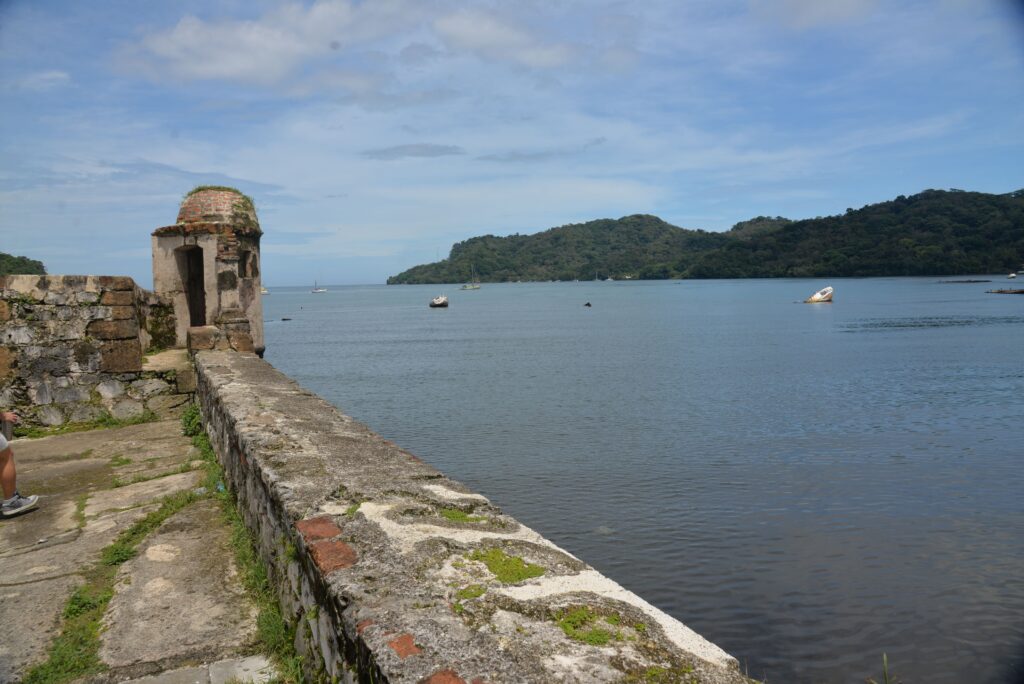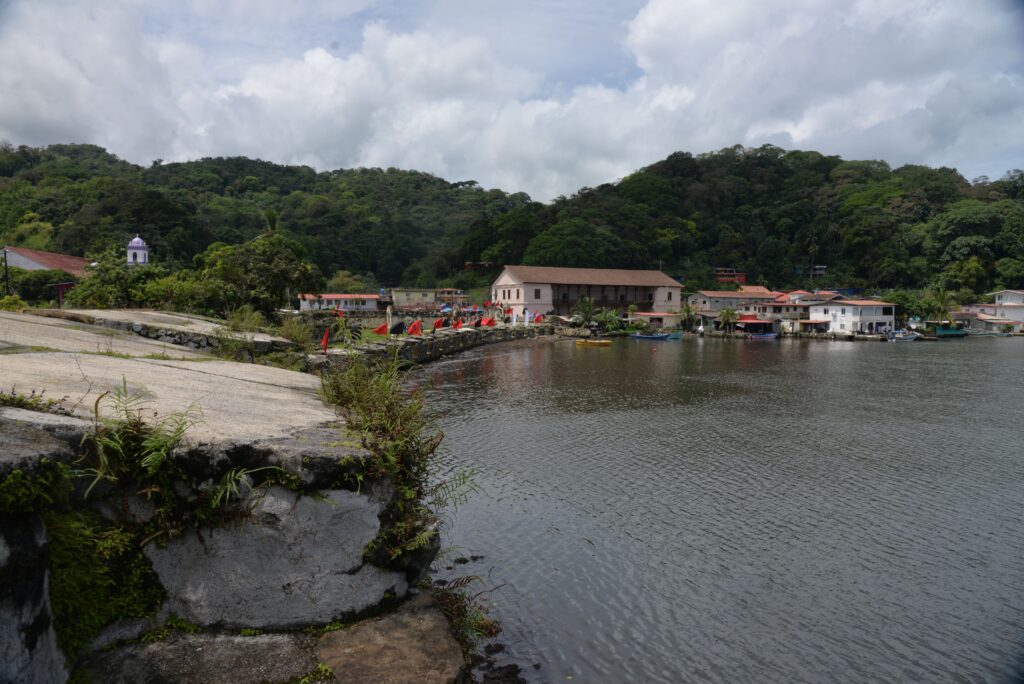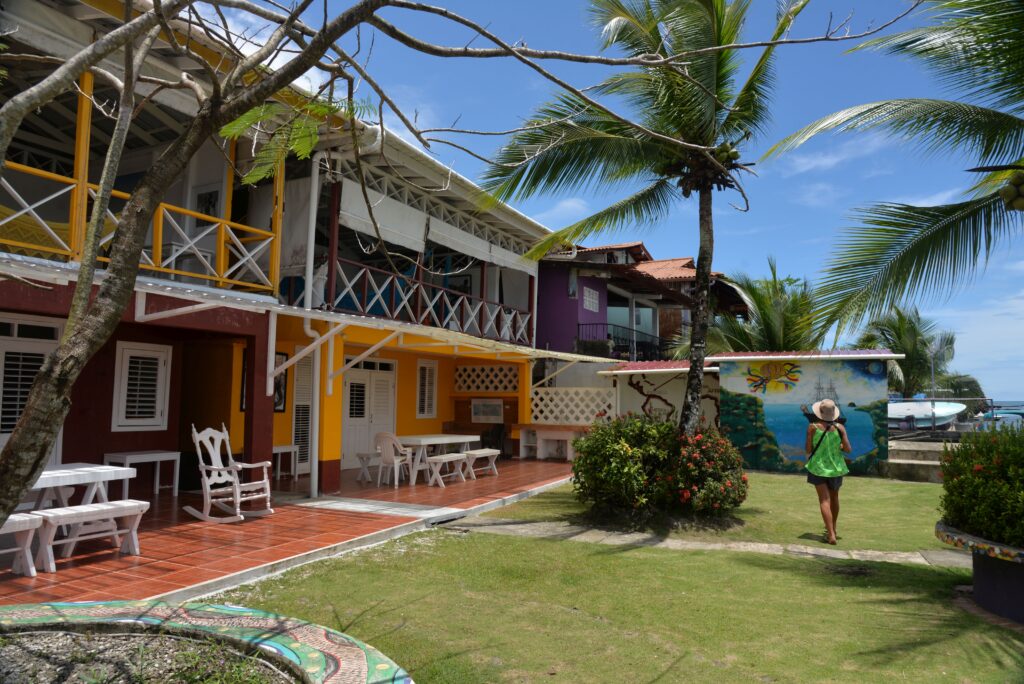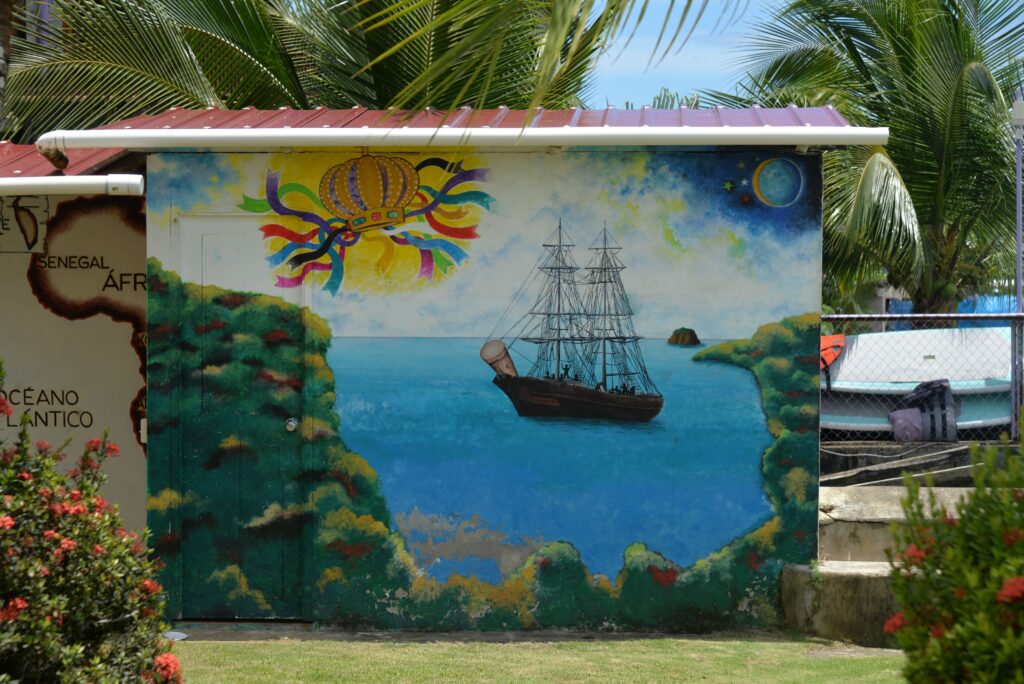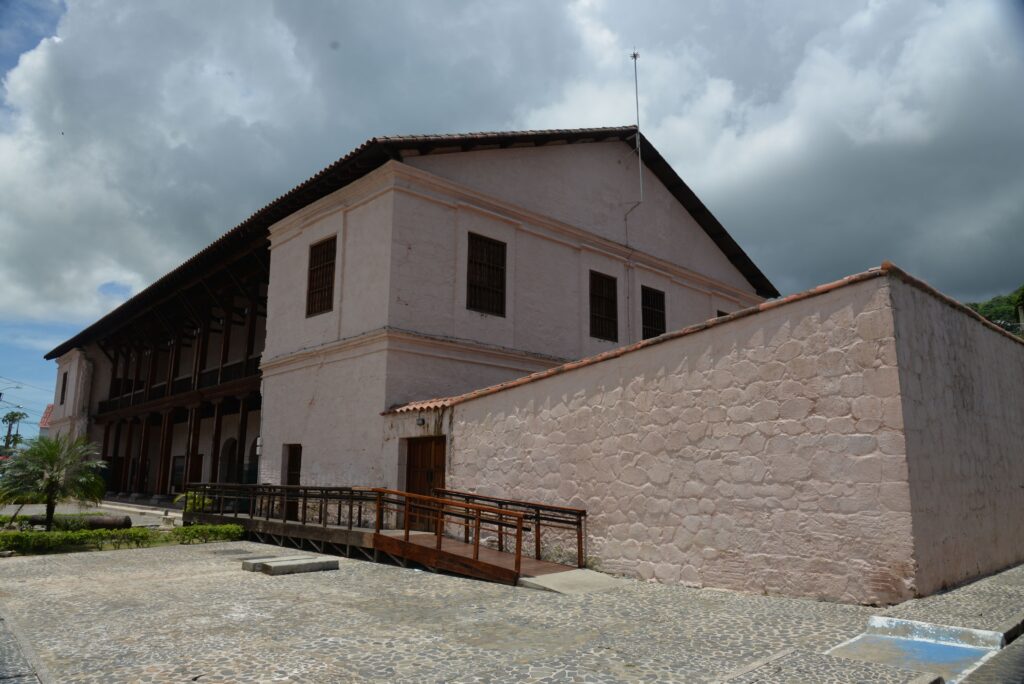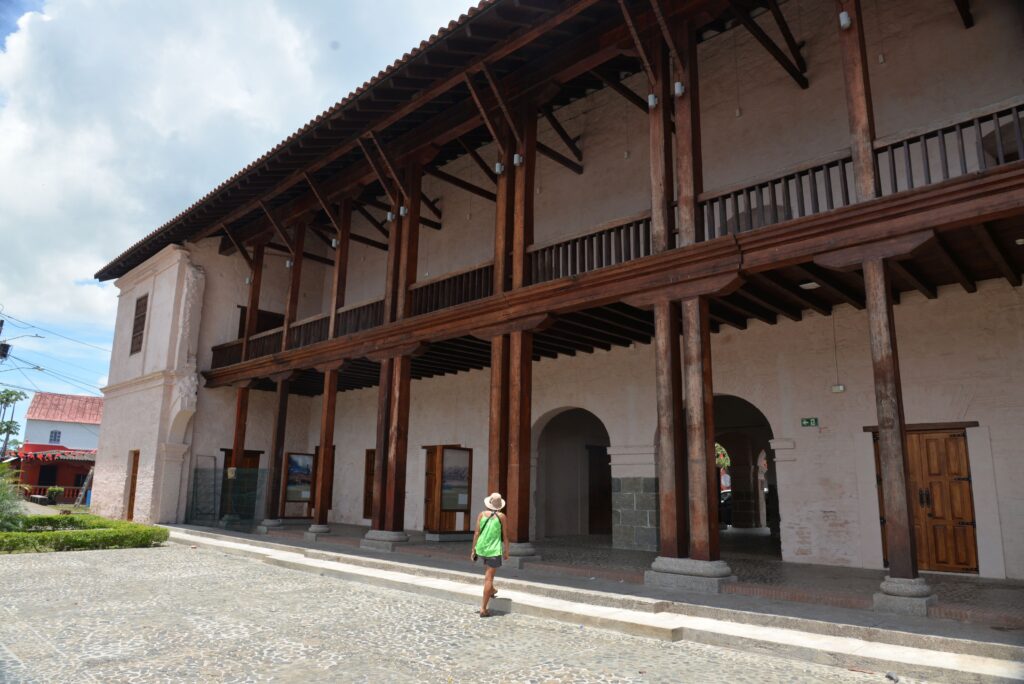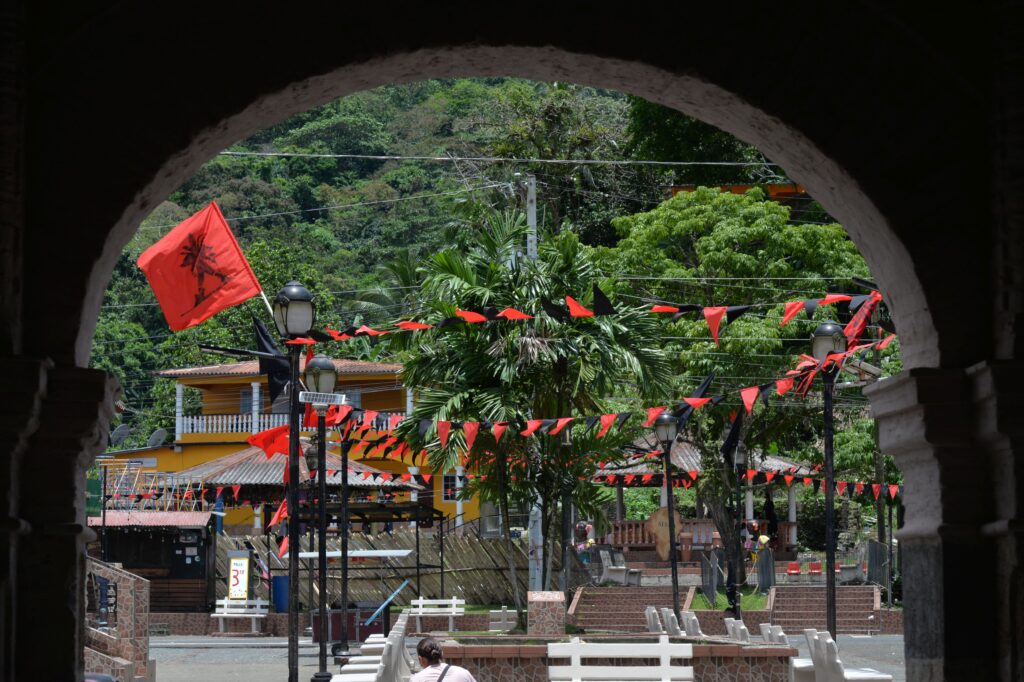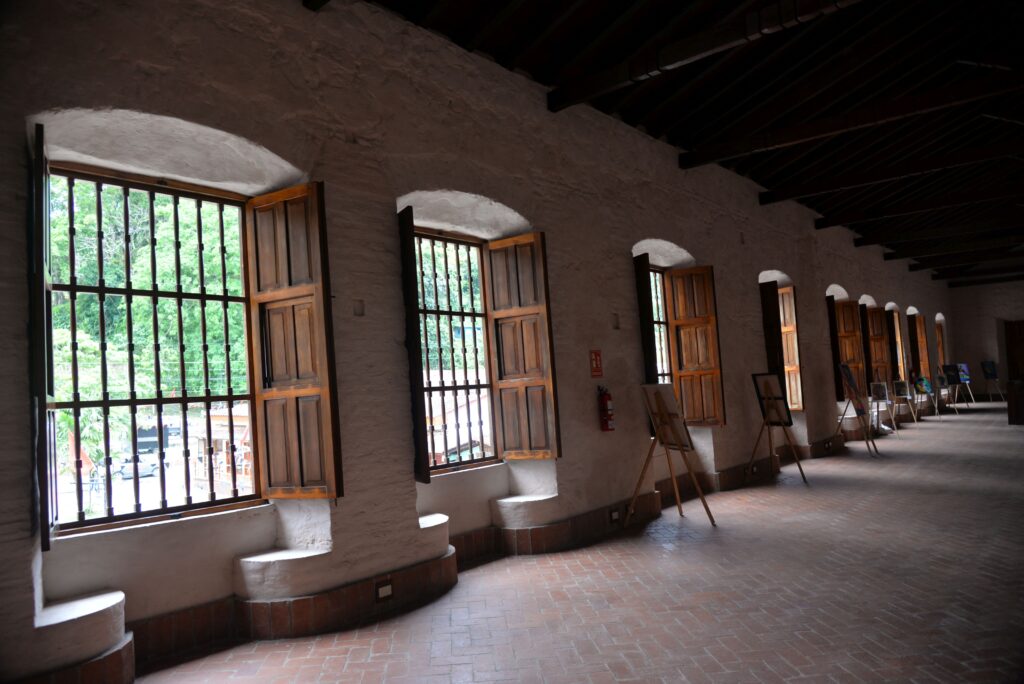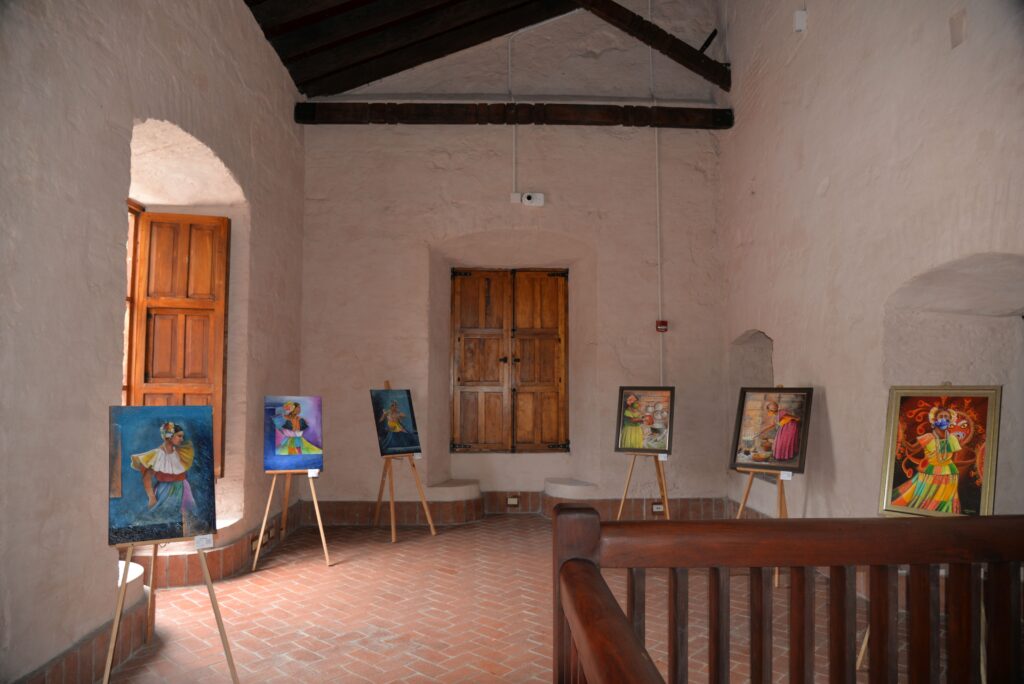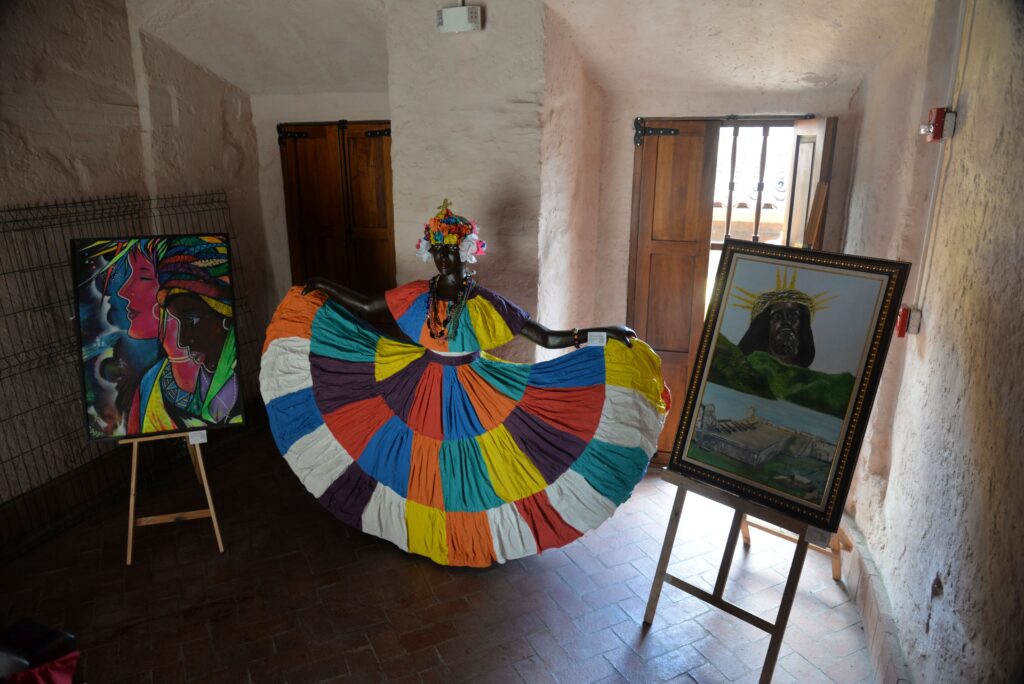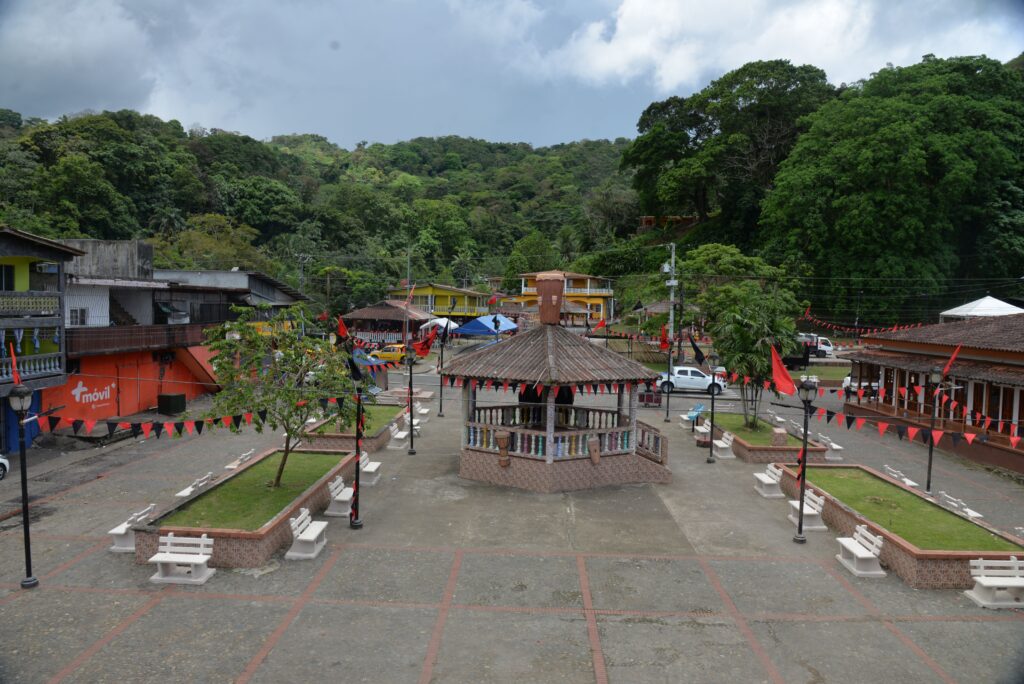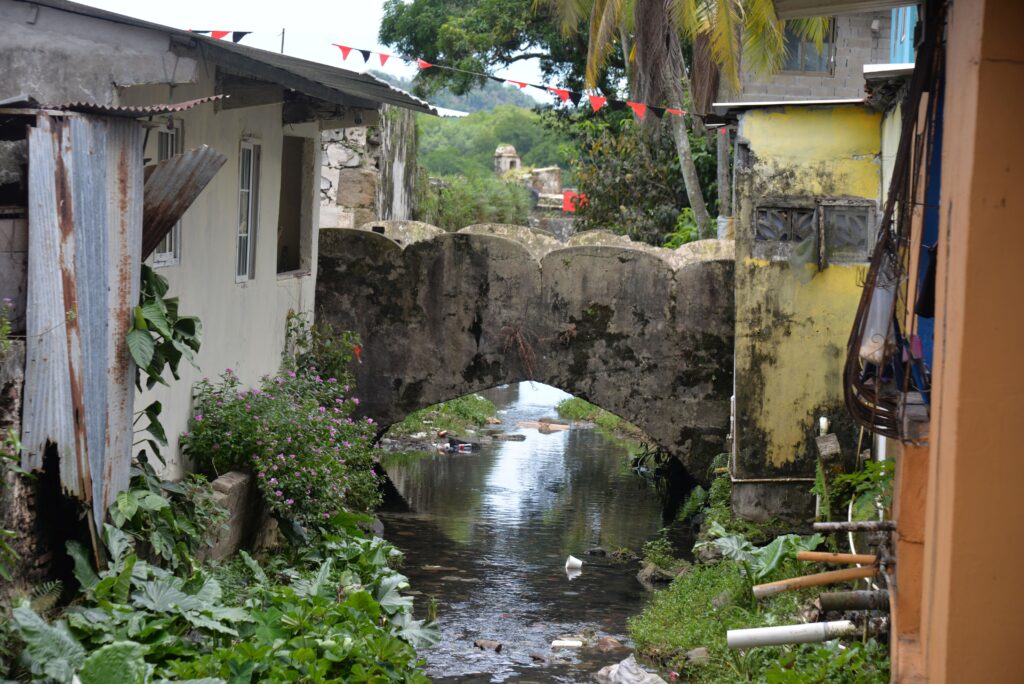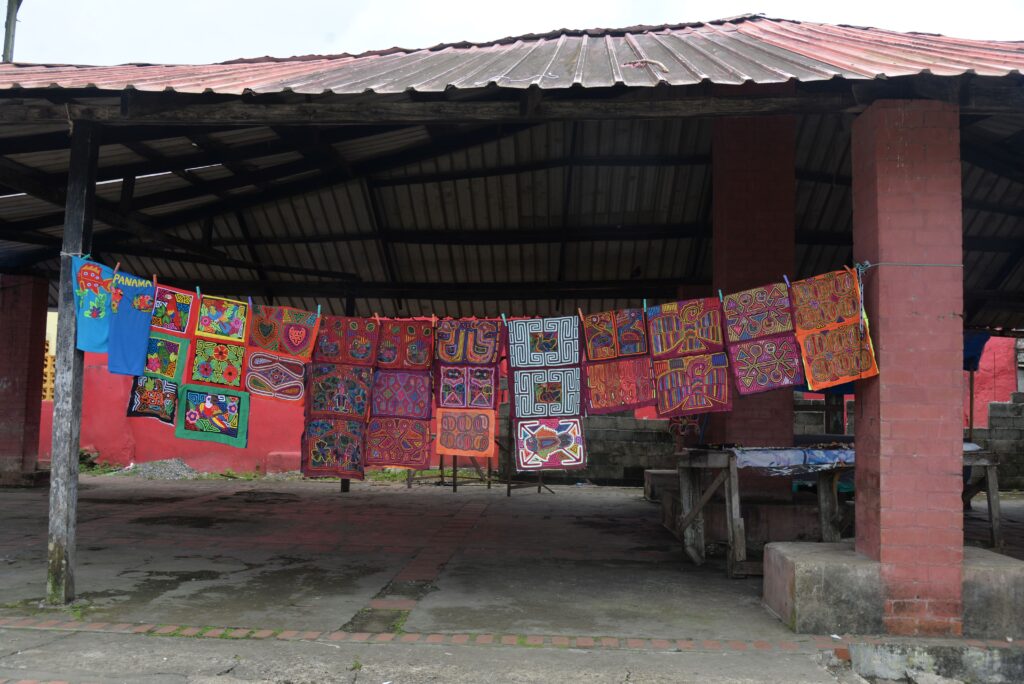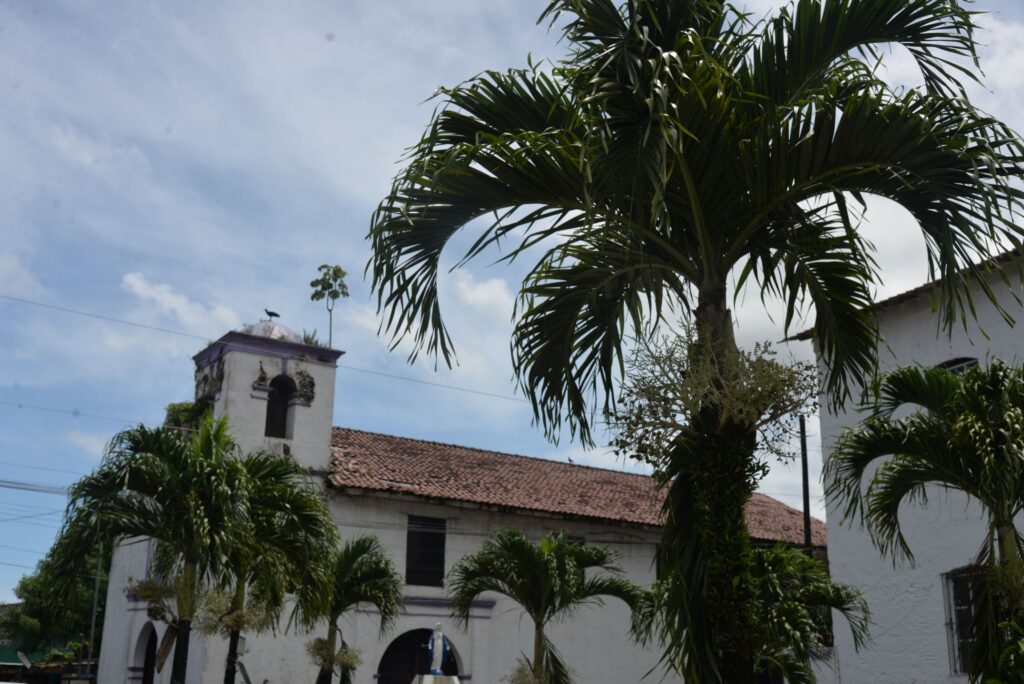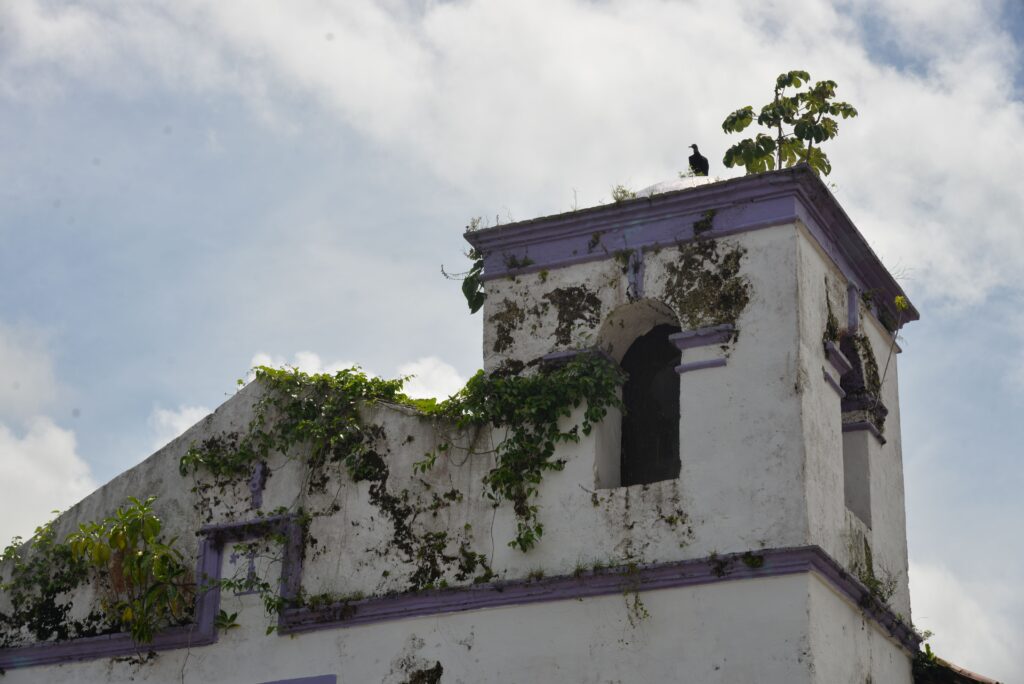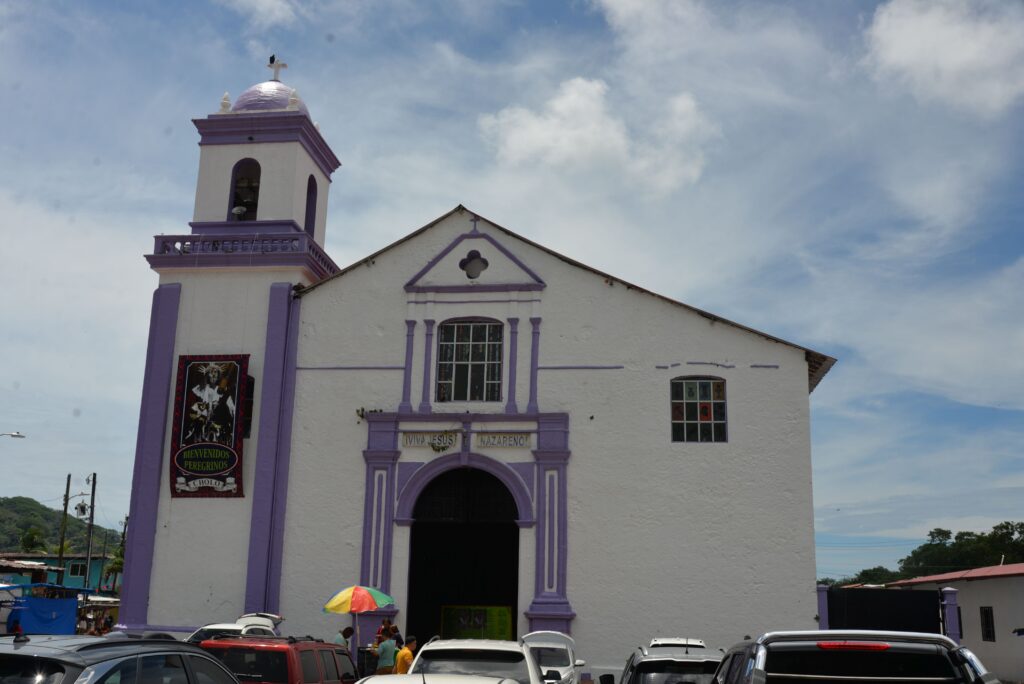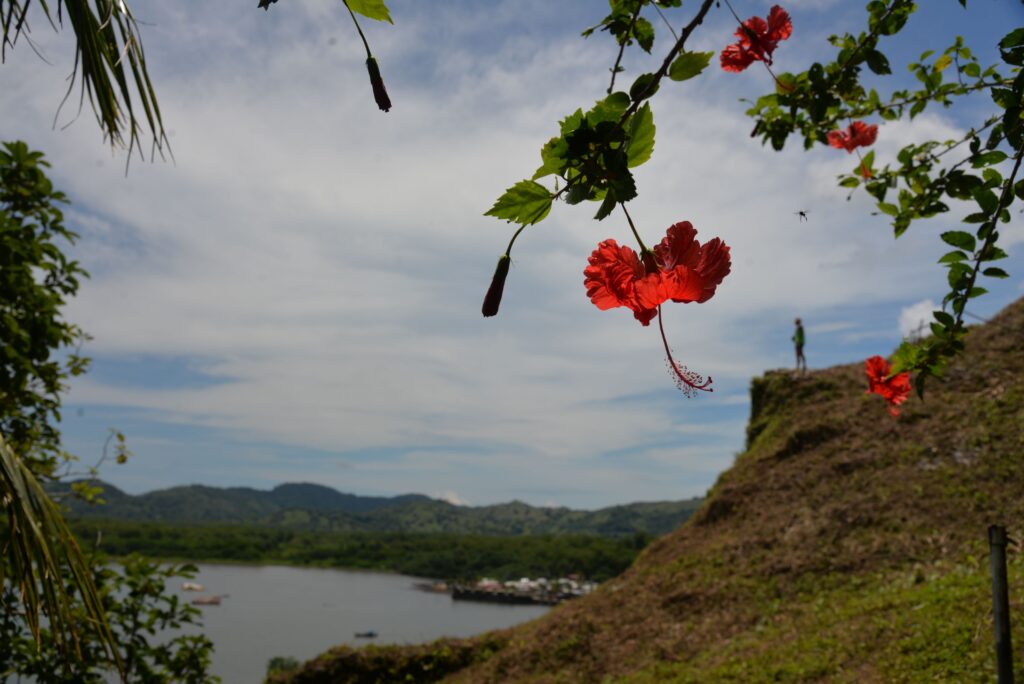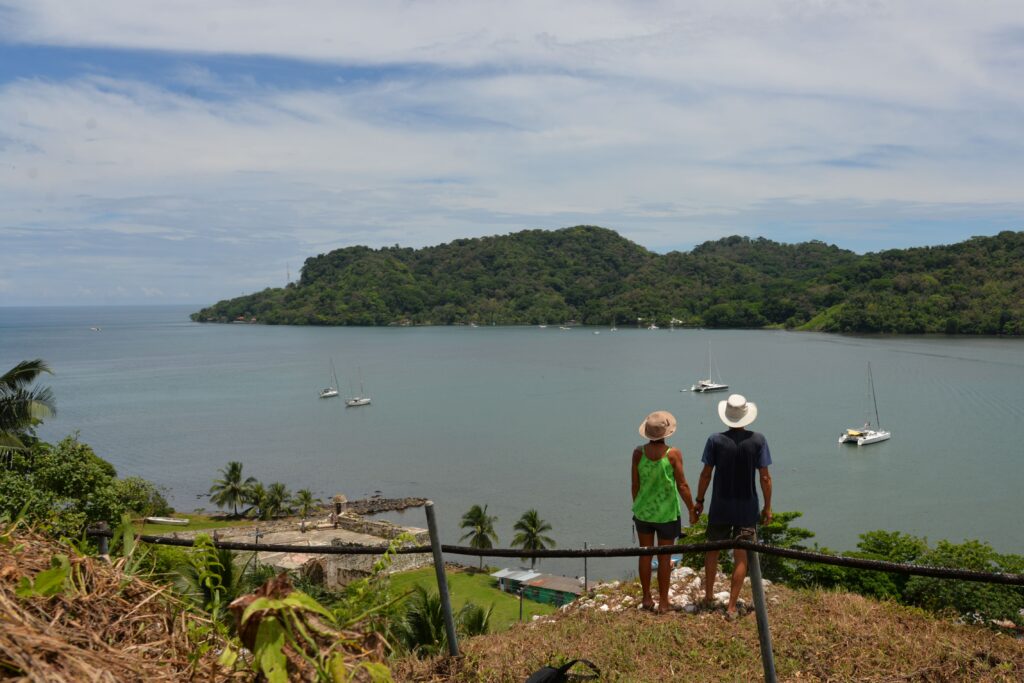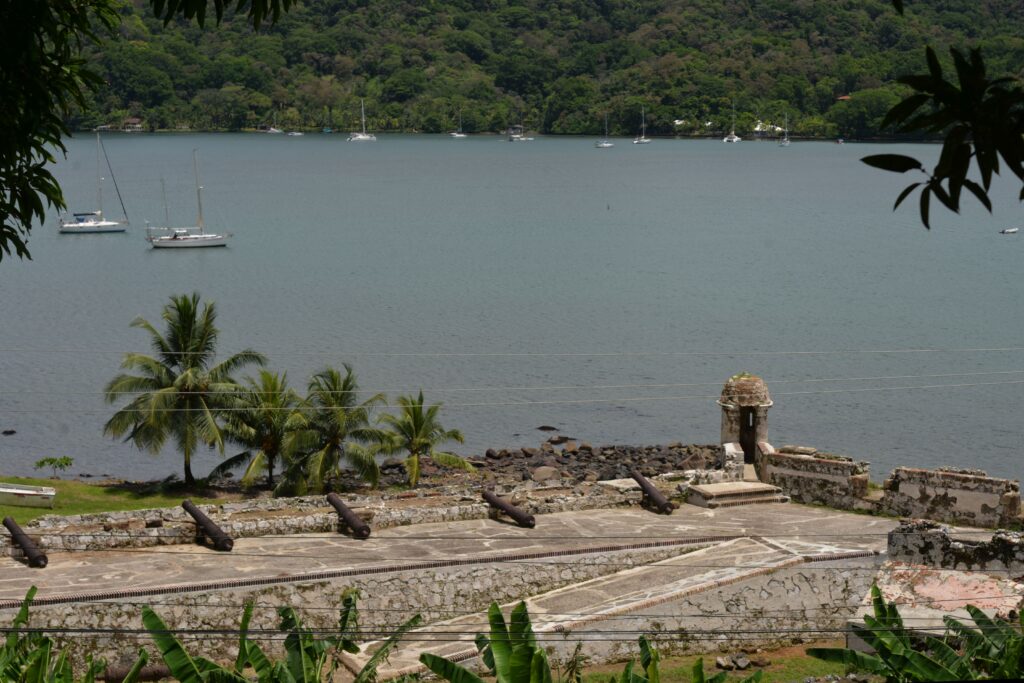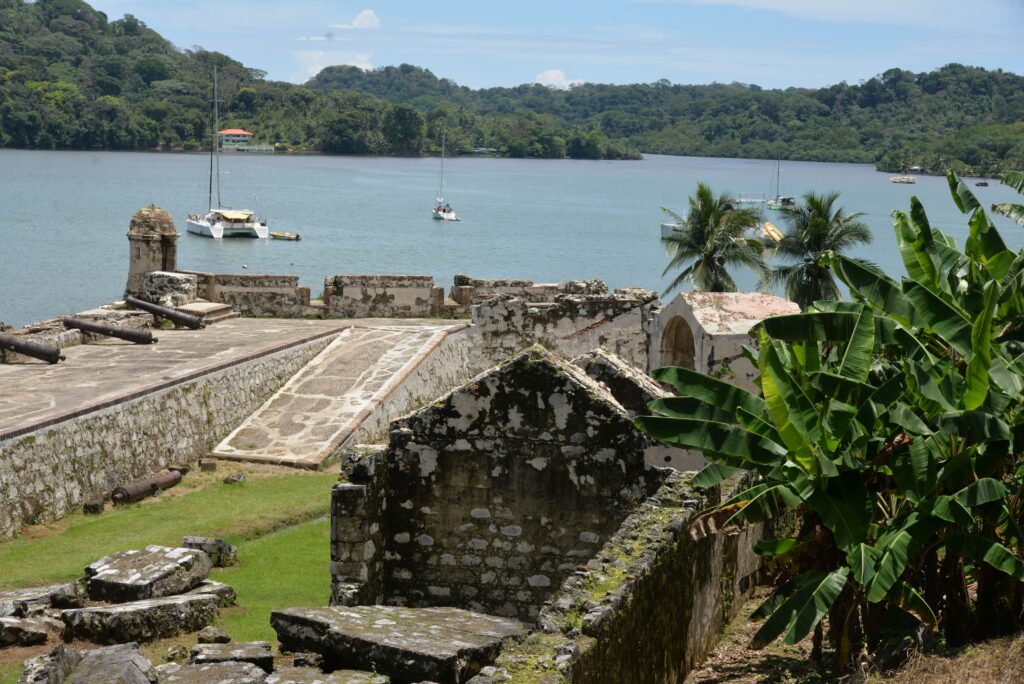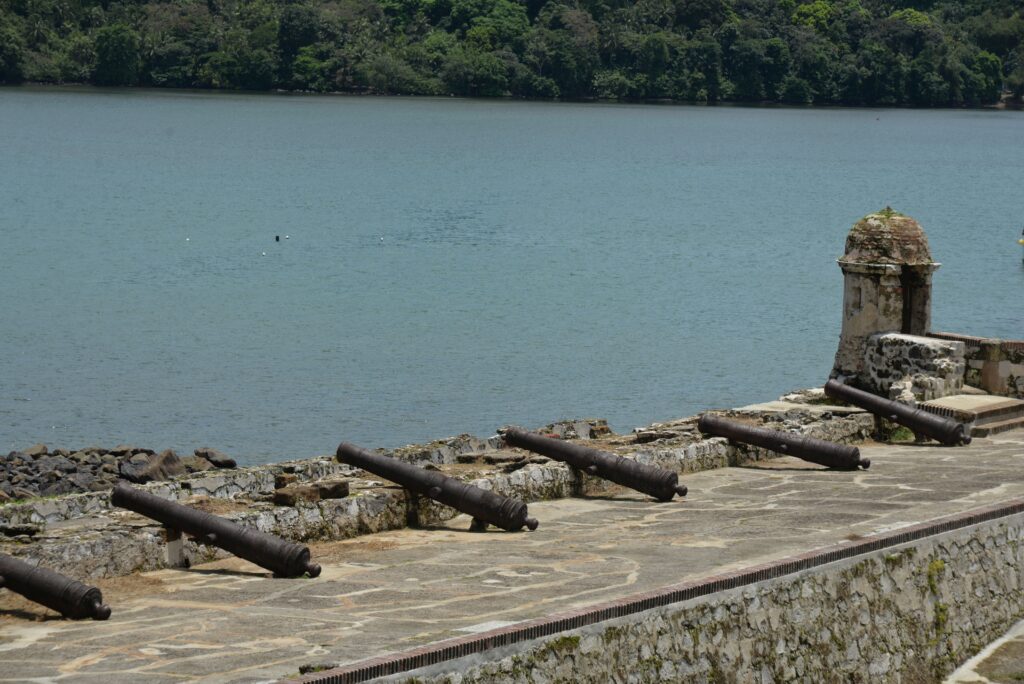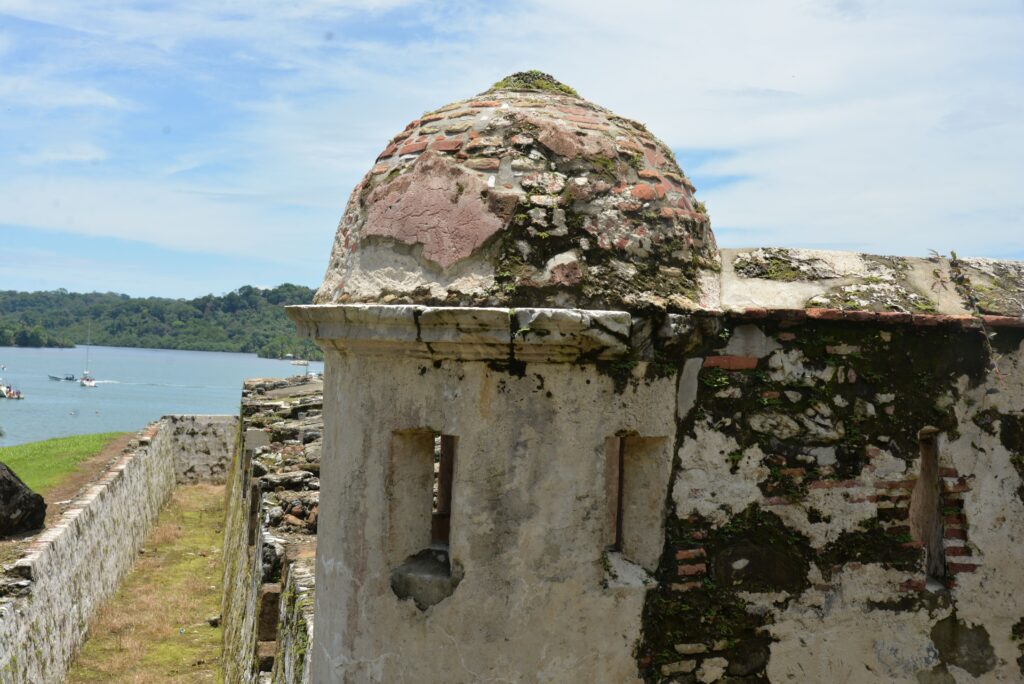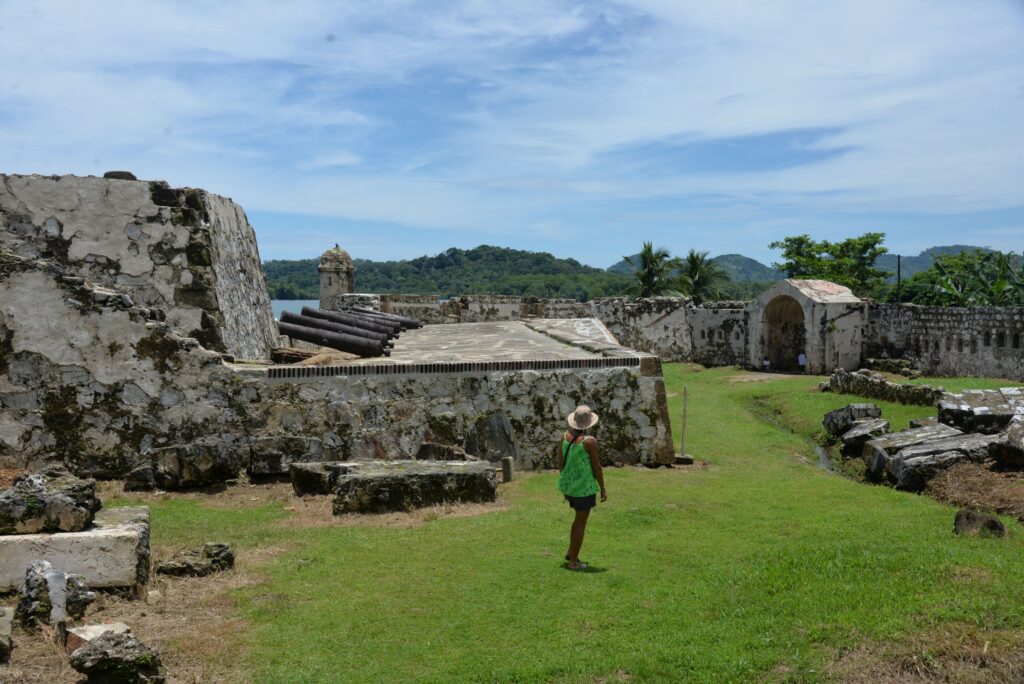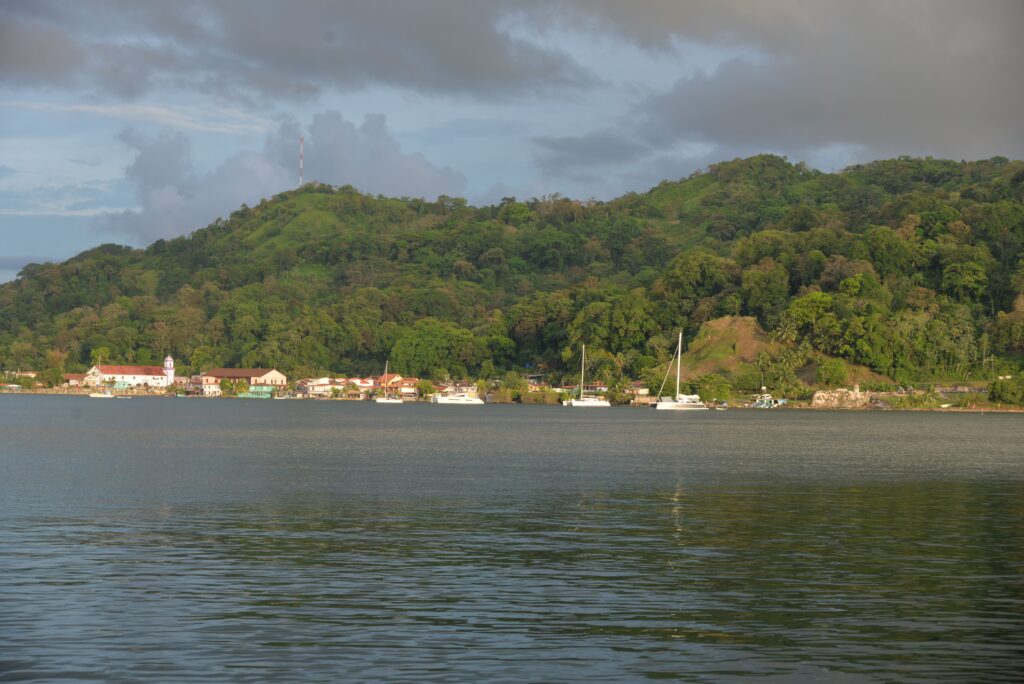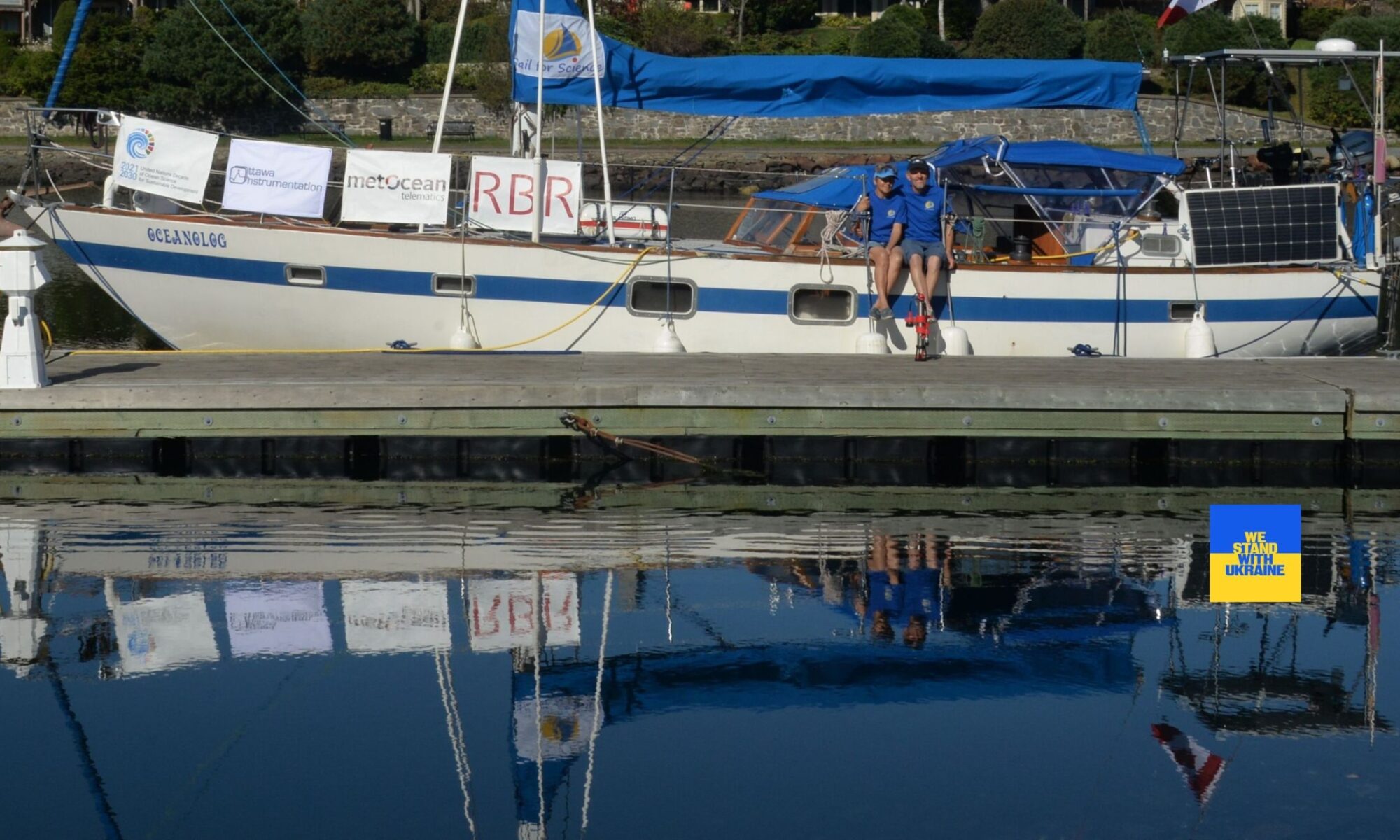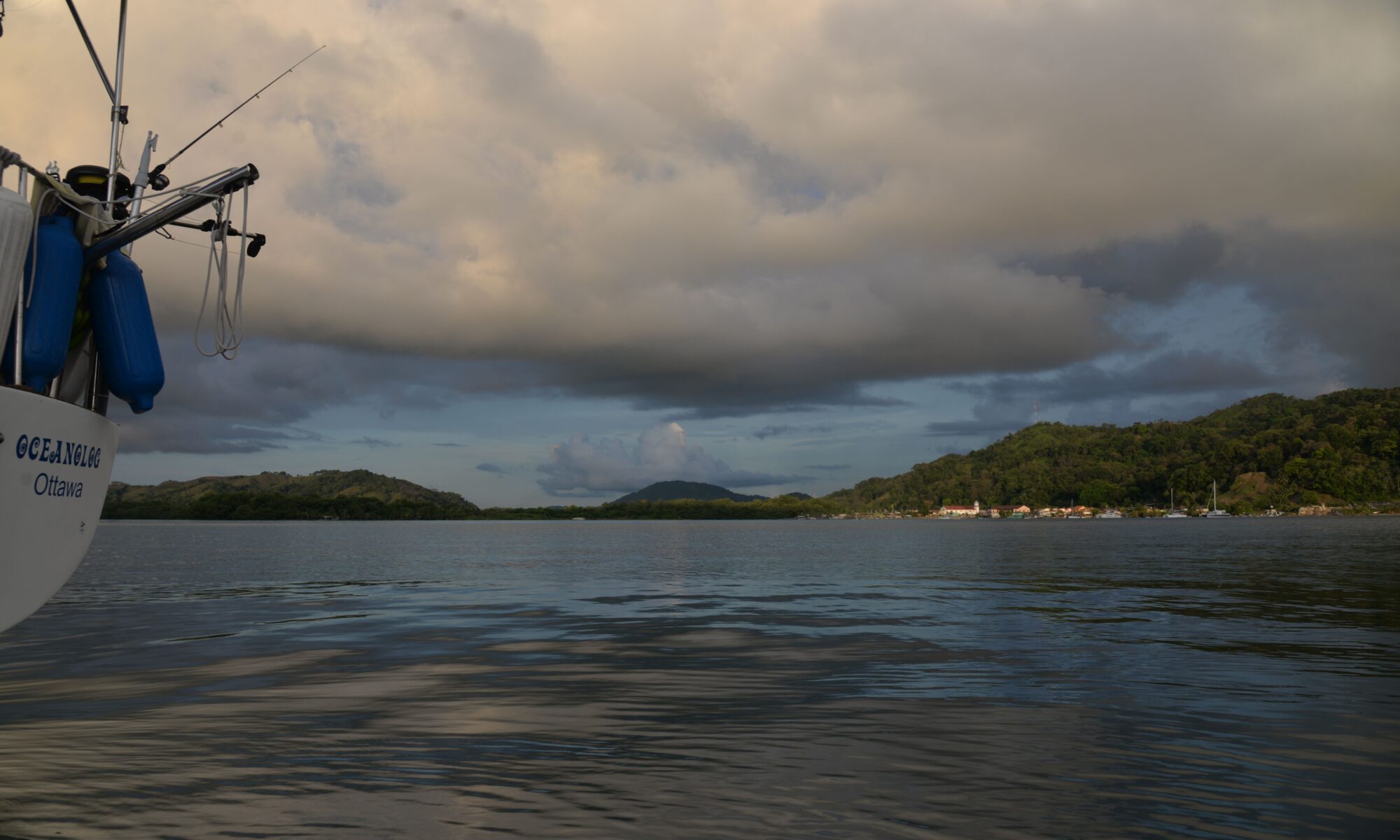After a short ride on our dinghy, we arrived in Portobelo, a town closely linked to Panama’s colonial history—and once the heart of Spain’s treasure-shipping operations in the New World. It’s hard to believe that this quiet, sleepy town was once the bustling epicenter of gold, silver, and spice flowing from South America to Europe.
The remnants of grandeur are still here, albeit wrapped in rust, vines, and time. The old customs house, Aduana Real, now serves as a museum. Its thick coral-stone walls and cavernous halls once stored the riches of the empire while bureaucrats stamped and sealed royal paperwork with appropriately smug ceremony. Walking through it now, we could almost hear the echo of clinking coins and whispered plots to steal them.
We wandered along uneven cobblestone streets, past colorful houses and weather-worn churches. Our destination was Iglesia de San Felipe, home of the Black Christ of Portobelo—a life-size statue of Christ dressed in purple robes, revered by pilgrims from across the country. Legend has it that the statue mysteriously arrived on a cargo ship in the 17th century and, in typical divine fashion, refused to leave. Whether you believe the story or not, there’s something deeply moving about the quiet reverence inside the church, where the air is thick with incense and candles flicker beside weathered prayer cards.
We then decided to climb the hill overlooking the town—a sweaty but rewarding hike. The trail, half-covered in tangled roots and shaded by jungle canopy, eventually opened up to reveal a stunning panoramic view of the bay, the crumbling forts, the moored sailboats, and the turquoise sweep of the Caribbean beyond. Up there, the whole of Portobelo unfolded like a storybook illustration of a forgotten empire.
After the descent, we visited two more forts located right in town—San Jerónimo and Santiago de la Gloria. These moss-covered stone fortresses, once bristling with cannons and soldiers, are now quiet ruins occupied by iguanas and curious tourists. Still, their strategic placement facing the bay hints at the constant threat of pirate attacks that plagued this coast in the 17th and 18th centuries. Climbing over the walls and peering through cannon embrasures, we imagined the thunder of gunfire and the sight of sails on the horizon—moments before either riches were defended or stolen.
Back on our boat that evening, the forts silhouetted against the setting sun, we felt Portobelo had left its mark on us. It’s a place of contradictions—majestic and humble, haunted and hopeful, cracked by time but full of life. Like the Black Christ in the church, Portobelo remains right where it’s meant to be—rooted in history, refusing to be forgotten.
